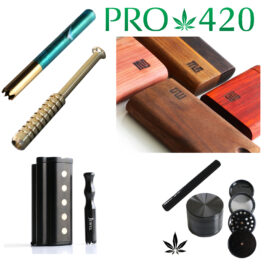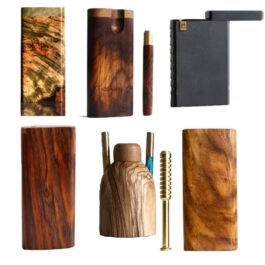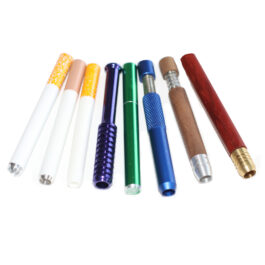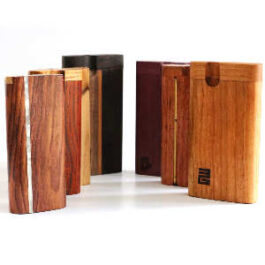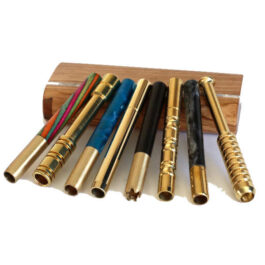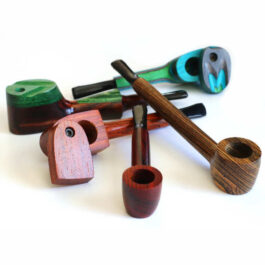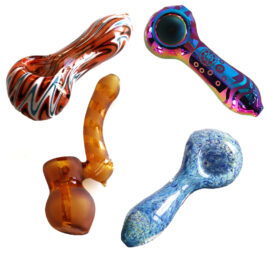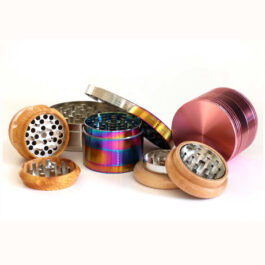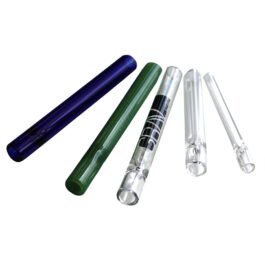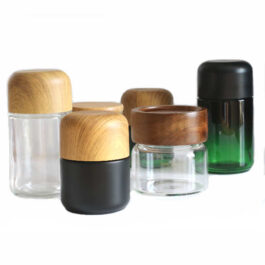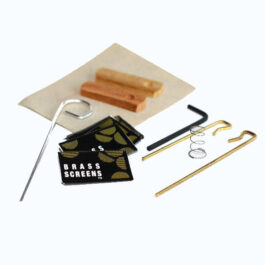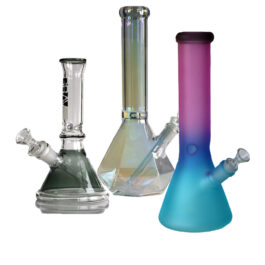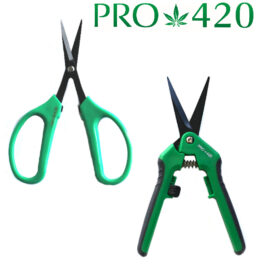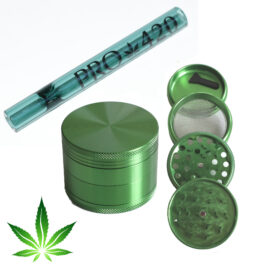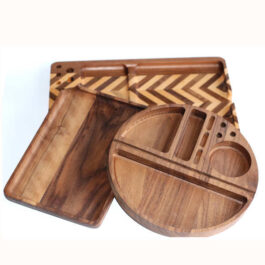Ask any experienced cannabis consumer and they’ll tell you: how you grind your flower can drastically influence how it burns, tastes, and performs. While often overlooked, grinding is one of the most crucial preparation steps, right up there with choosing your strain or rolling technique.
When you break down cannabis into smaller, evenly sized pieces using weed grinders, you’re not just prepping it for convenience, you’re setting the stage for a more controlled, flavorful, and efficient smoking experience.
Whether you’re loading a weed bowl, packing a one hitter, or prepping your bongs, an even grind ensures that the flower burns consistently, doesn’t clog your device, and allows the full range of cannabinoids and terpenes to be released.
The end result? More flavor. Better burn. Less waste.
Key Takeaways
- Even grinding improves flavor, burn quality, and efficiency when smoking or vaping cannabis.
- Using a grinder preserves trichomes and ensures even airflow, especially in weed bowls, one hitters, and bongs.
- Different devices require different grind sizes, one hitters benefit from a finer grind, while bongs perform better with a medium-coarse grind.
- Over-grinding can cause harsh smoke, airflow issues, and wasted kief.
- Metal grinders offer the best balance of durability, performance, and kief collection.
- Proper storage of ground cannabis is key to preserving potency and flavor.
- Collecting kief adds a potency boost to any smoking method and is best done with a four-piece grinder.
Grinding Weed vs. Breaking by Hand
At some point, most users have skipped the grinder and opted to tear up their bud by hand. It’s quick, tactile, and maybe even a little nostalgic. It may be the case that it’s your only option. But it also comes at a cost:
What Happens When You Break Weed by Hand:
- Inconsistent pieces: Uneven particle sizes result in unpredictable burns, hot spots, wasted product, or worse, harsh smoke.
- Loss of potency: When you use your fingers, the sticky trichomes responsible for potency and flavor often stick to your skin.
- Clogging issues: Larger chunks are more likely to block airflow in weed bowls and one hitters.
By contrast, grinding with a proper tool ensures:
- Uniformity for even combustion.
- Retention of potency by keeping trichomes intact.
- Smooth, consistent hits, especially important when using bongs or vaporizers.
What Grinding Actually Changes
You might wonder: what’s really changing when you grind weed instead of tearing it apart?
Surface Area & Burn Control
Even grinding increases the surface area of the cannabis, allowing heat to interact more evenly with the flower. This ensures a slow, steady burn rather than uneven combustion or “canoeing.”
Whether you’re smoking from bongs, a weed bowl, or a one hitter, a well-distributed grind helps you avoid common annoyances like harshness, hot sparks, or incomplete burning.
Flavor Profile & Terpene Release
Grinding unlocks more terpenes, the aromatic compounds responsible for a strain’s flavor and aroma. A quality grinder will gently separate the bud without crushing the delicate trichomes, preserving the nuanced flavors.
Cannabinoid Activation
Consistent particle size allows for more efficient activation of cannabinoids like THC and CBD. Especially when using vaporizers, a finer grind ensures more cannabinoids are released with each hit.
Grinder Types
Let’s explore the different types of weed grinders, their pros and cons, and when to use each one.
Two-Piece Grinder (Single Chamber)
- Best for: Occasional users or quick sessions.
- Pros: Compact, easy to use, low cost.
- Cons: No pollen/kief collection; less control over grind consistency.
Three-Piece Grinder
- Best for: Use Three-Piece grinders if you want to collect ground flower separately.
- Pros: Middle compartment collects ground cannabis.
- Cons: Lacks a kief catcher.
Four-Piece Grinder
- Best for: Daily users and those interested in collecting kief.
- Pros: Multiple chambers for grinding, collecting flower, and filtering kief.
- Cons: Slightly bulkier, but provides the most utility.
Electric Grinder
- Best for: Medical users, large quantities, or those with limited hand mobility.
- Pros: Fast, consistent, and easy to use.
- Cons: Battery or electricity-dependent; higher price point.
Material Considerations: Metal, Plastic, or Wood
Not all grinders are created equal, and material choice matters just as much as design.
Metal Grinders (Aluminum or Stainless Steel)
- Durability: Long-lasting and wear-resistant.
- Performance: Sharp teeth for clean, precise grinding.
- Cleaning: Easy to clean and maintain.
- Recommendation: Ideal for consistent, heavy use.
Plastic Grinders
- Durability: Can crack or degrade with time.
- Performance: Less sharp teeth; prone to inconsistency.
- Cost: Very affordable, but not ideal for long-term use.
- Best for: Light users or travel.
Wood Grinders
- Aesthetic: Wood grinders have a natural, artisan appeal.
- Performance: Often less efficient; no kief catcher.
- Durability: Teeth may dull faster.
- Best for: Occasional use or as a collector’s piece.
If you’re a frequent cannabis user, investing in a quality metal grinder will pay off in terms of both function and longevity.
Over-Grinding and Potential Downsides to Grinding
As with anything in cannabis prep, there’s a balance to strike. Over-grinding, especially into a fine powder, can backfire.
Here’s Why You Should Avoid Over-Grinding:
- Restricted airflow: Finely ground cannabis can pack too tightly, especially in a one hitter or bong bowl, choking airflow.
- Harsher burn: A powdery consistency may combust too fast, leading to high temperatures and a rougher inhale.
- Kief loss: Over-grinding can knock off too many trichomes, reducing potency if you’re not capturing them.
Tip:
Aim for a medium-fine grind: small enough to burn evenly, fluffy enough to breathe easily, and coarse enough to retain structure.
Common Myths
There’s no shortage of misinformation around grinders. Let’s debunk a few:
Myth 1: “Grinders ruin the bud.”
Reality: Poor grinders can damage trichomes, but quality ones preserve them. In fact, grinders protect potency by reducing contact with your hands.
Myth 2: “Grinders aren’t necessary with joints.”
Reality: Rolling joints with hand-broken weed can lead to uneven burning and frequent relights. A good grind helps joints burn slow and evenly.
Myth 3: “One hitters don’t need ground weed.”
Reality: A one hitter performs best when packed tightly with uniformly ground flower. Larger chunks clog easily and don’t burn completely.
Grinding for Different Devices
Different smoking or vaping methods call for different grind textures. Here’s how to match your grind to your method:
| Device | Ideal Grind | Why It Works |
| Weed Bowl | Medium | A weed bowl ensures even burn and proper airflow without pulling through. |
| One Hitter | Medium-fine | Tight packs burn fully; fine grind increases efficiency. |
| Bongs | Medium-coarse | Prevents clogs, allows smooth draws, and avoids ash pull-through. |
| Rolling Papers/Cones | Medium-fine | Helps avoid canoeing, creates consistent burn. |
| Vaporizers | Fine | Increases surface area for vaporization, better cannabinoid release. |
Understanding how your grind size impacts your gear can seriously improve your sessions.
Expert & User Tips for Optimal Grinding
Beyond the basics, here are some practical tips from seasoned cannabis consumers and grinder aficionados:
Grinder Maintenance Tips
- Clean your grinder monthly: Use isopropyl alcohol and a soft brush to remove residue.
- Freeze your grinder before cleaning: This helps harden sticky trichomes, making them easier to collect or clean.
- Don’t overtighten: It’s tempting to crank down hard, but gentle, consistent grinding works best.
Grinding Tips
- Reverse turns: Occasionally twist your grinder counterclockwise to dislodge stuck bits.
- Use a coin trick: Place a sanitized coin in the kief compartment and shake to collect more trichomes.
- Grind what you need: Ground weed dries out faster than whole buds, grind only what you’ll use in a day or two.
These little tweaks can lead to noticeable improvements in flavor, potency, and overall satisfaction.
Kief Collection
Kief – those fine, crystalline particles that fall off your bud during grinding – is the purest, most potent part of the plant. A four-piece grinder with a mesh screen allows you to collect it separately for later use.
Ways to Use Kief:
- Sprinkle it in a joint for an extra punch.
- Top your weed bowl to intensify your hit.
- Press it into hash.
- Bake it into edibles, since it’s rich in cannabinoids.
Storage
Proper storage of your ground weed is crucial for maintaining flavor and potency. Exposure to air, light, and humidity can degrade your cannabis quickly once it’s ground.
Best Practices for Storing Ground Weed:
- Use airtight glass jars (preferably UV-protected).
- Label your strains to keep track of effects and flavors.
- Avoid grinders as storage: Leaving weed in your grinder exposes it to air and can lead to mold or dryness.
- Store in a cool, dark place to preserve terpenes and cannabinoids.
If you’re grinding ahead of time, don’t store it for more than a week to maintain freshness.
Conclusion
Grinders may not get as much attention as pipes, bongs, or rolling papers, but they’re absolutely essential for anyone who values flavor, efficiency, and overall quality in their cannabis experience.
Whether you’re loading up a weed bowl, taking a discreet puff from a one hitter, or passing around bongs during a session with friends, the consistency of your grind will make all the difference.
Investing in a quality grinder ensures that you preserve potency, enhance taste, and reduce waste – every single time.
Pro 420 understands that the perfect smoke starts with the perfect prep. Their premium grinders are designed for users who demand the best from their cannabis. Because when it comes to enjoying your flower, the little things, like how you grind, make all the difference.
Frequently Asked Questions (FAQs)
1. Why does grinding weed make it burn better?
Grinding increases the surface area of your flower, allowing it to burn more evenly and thoroughly. This leads to smoother, more flavorful hits and reduces waste.
2. Is it better to grind weed or break it up by hand?
Grinding is better for consistency, efficiency, and preserving potency. Hand-tearing can result in uneven chunks, poor airflow, and lost trichomes.
3. What’s the best grinder for collecting kief?
A four-piece metal grinder is ideal. It features a mesh screen that filters out fine trichomes (kief) into a separate compartment for later use.
4. How fine should I grind weed for a one hitter?
A medium-fine grind works best. It allows the flower to pack tightly, burn completely, and prevents clogs in the narrow chamber.
5. Can I use a grinder for my bong bowls?
Absolutely. In fact, a consistent medium grind is ideal for bongs, promoting even airflow and preventing ash pull-through.
6. Do plastic grinders affect the quality of the weed?
Plastic grinders can wear down quickly, resulting in inconsistent grinds and even plastic flakes in your flower. Metal grinders are more durable and deliver cleaner results.
7. What happens if I grind weed too fine?
Over-grinding can lead to poor airflow, faster burning, and harsher smoke. It’s best to aim for a fluffy consistency rather than a powder.
8. Is it okay to store ground weed in my grinder?
It’s not ideal. Ground cannabis loses freshness quickly when exposed to air. Store it in an airtight glass jar in a cool, dark place for best results.

